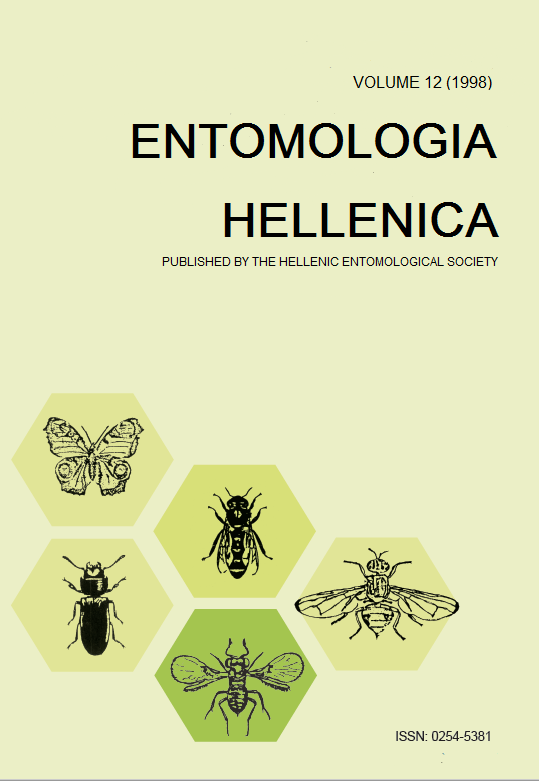Ηλεκτροφυσιολογίες αποκρίσεις της μΰγας του κερασιού Rhagoletis cerasi (Diptera: Tephritidae), σε φυσικές πτητικές ουσίες
Περίληψη
Πραγματοποιήθηκαν ηλεκτροφυσιολογικές παρατηρήσεις της μΰγας των κερασιών Rhagoletis cerasi (Linne) (Diptera: Tephritidae) για εβδομήντα-οκτώ ουσίες από τρεις κυρίες κλάσεις οργανικών ενώσεων (αλδεΰδες, κετόνες και μονοτερπε'νια) σε ηλεκτροαντενογράφο (ΗΑΓ). Δεν παρατηρήθηκε καμία διαορορά μεταξύ αρσενικώνκαι θηλυκών εντόμων στον βαθμό απόκρισης για τις ουσίες που δοκιμάστηκαν. Πιστοποιήθηκε ότι το με'γεθος απόκρισης των εντόμων στις
διάφορες ουσίες εξαρτάται από το μέγεθος της αλυσίδας των μορίων, την ύπαρξη διπλών δεσμών και την ύπαρξη και θέση χαρακτηριστικών ομάδων.
Λεπτομέρειες άρθρου
- Πώς να δημιουργήσετε Αναφορές
-
Raptopoulos, D., Koutsaftikis, A., Haniotakis, G., & Douma, E. (1998). Ηλεκτροφυσιολογίες αποκρίσεις της μΰγας του κερασιού Rhagoletis cerasi (Diptera: Tephritidae), σε φυσικές πτητικές ουσίες. ENTOMOLOGIA HELLENICA, 12, 31–36. https://doi.org/10.12681/eh.14017
- Τεύχος
- Τόμ. 12 (1998)
- Ενότητα
- Articles

Αυτή η εργασία είναι αδειοδοτημένη υπό το CC Αναφορά Δημιουργού – Μη Εμπορική Χρήση – Παρόμοια Διανομή 4.0.
Authors who publish with this journal agree to the following terms:
Authors retain copyright and grant the journal right of first publication with the work simultaneously licensed under a Creative Commons 4.0 license.
Authors are able to enter into separate, additional contractual arrangements for the non-exclusive distribution of the journal's published version of the work (e.g. post it to an institutional repository or publish it in a book), with an acknowledgement of its initial publication in this journal. Authors are permitted and encouraged to post their work online (preferably in institutional repositories or on their website) prior to and during the submission process, as it can lead to productive exchanges, as well as earlier and greater citation of published work.



